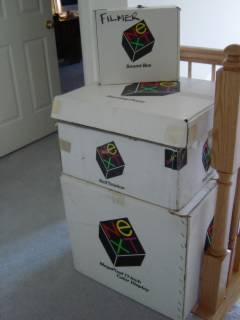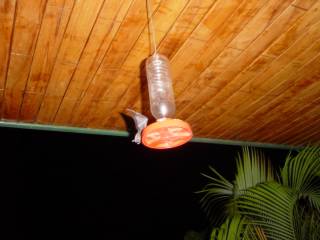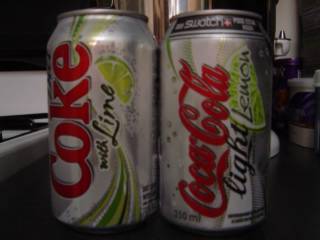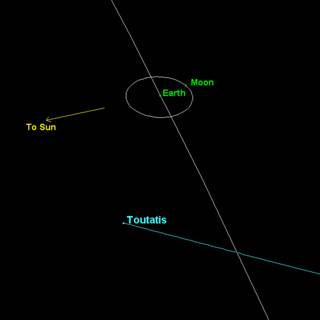I bought my NeXT colorstation slab on April 3, 1992. NeXT ("black") hardware was Steved in October of 1993.
I bought my Apple Newton MP2100 in February of 1998. Newton ("green") hardware was Steved the same month.
I'm not sure whether to classify myself as an 'early adopter' or an idiot. Either way, the products still perform well. The NeXT, while slow, can handle most any attachment or compression scheme that my Macs or PCs cannot. I still use several Newtons.
...sigh. Now I'm just waiting for the axe to fall on my latest purchase, the iMac. I once thought of posting news of what I had recently bought so that everyone could stay away from it. At least I am confident that my other purchase, the iPod, is here to stay.
Why did I buy the NeXT in the first place? Well, I had just finished my Ph.D. at MIT, and I had a ton of UNIX tapes with my data and codes, a thesis written on a Mac, and I could see Microsoft's tendrils reaching out and choking out the future. So when I saw this cold, cool, black machine running Mac, DOS, and UNIX windows at the same time on a 4,096 color screen (and you could Cut & Paste between them!) I jumped. Here's my recreation of what I saw that day (remember, this is 1992...):

Sold!

This ease of use and versatility is why Tim Berners Lee decided to develop what would become the world-wide web on a NeXT while he was at CERN.
In the process of finally packing up my NeXT machine, I came across some interesting memories:
Remember Mac 800 kb diskettes? Well, the NeXT came with a drive capable of reading 2.8 Mb Extended Density (ED) diskettes. I've got dozens of boxes of the 800 kb diskettes, and a couple of boxes-worth of the 2.8 Mb ones. And no way to read any of them, since none of my remaining floppy drives will handle anything but the 1.4 Mb standard Double Density format.

2.8 Mb ED diskette

As I mentioned in my previous NeXT-lamentation post, I have enjoyed seeing traces of the NeXT in Mac OS X. Before I packed up the NeXT machine, I pulled off as many icons from the system as I could.
Here are four icons from the NeXT and Mac OSX that give away the heritage:


NeXT and OSX Home Folder icons

This next one is a little more difficult to catch, since they are for different applications:


NeXT Prefs and OSX digital clock

Jobs left Apple in the late 1980's to form NeXT, and it has been said that he wanted to crush Apple with a vastly superior product. He did create a vastly superior product, but the price was so high that he could not get NeXT unit sales to a sufficient level to satisfy creditors, and in a move oddly similar to last week's IBM sell-off of its PC manufacturing facilities to the Chinese, NeXT ended up selling its hardware manufacturing plants to Canon, one of its major creditors. This was the 'Steving' of the hardware I had just bought in October 1993.
NeXT now concentrated on its powerful operating system, which by now could run on other platforms, and it rebranded it as NEXTSTEP. This later became OPENSTEP, with WebObjects. Here's the graphical transition:
 -->
--> 
NeXT to NeXTSTEP


To the OPENSTEP 'boxes' logo

And finally...
 -->
--> 
OPENSTEP WebObjects to OSX WebObjects

Incidentally, the largest website use of WebObjects is on the iTunes store site - one of the largest traffic sites on the web.
Note a small detail on the last icon - the rivets at the corners. These are characteristic of files from what was called the 'NeXT Interface Builder' (nib) - a graphical way of designing interfaces dating from the early 90's. You simply drew what you wnated to appear, and click-and-drag connected the code to the appropriate buttons and fields. Amazing. Here is the icon from the NeXT system for .nib files:

NeXT .nib file icon

Applications in OSX are full of .nib files. NeXT lives on, albeit under cover (shades of Lt. Sullivan, a rumor monger with a column in the NeXTWorld magazine).
At some level, Jobs must relish the fact that he brought back the core NeXT OS, and replaced the Apple Classic OS - thus finally conquering Apple. It makes sense, since it really is an easier OS. But I bet he never anticipated that the item that would be the core money-maker for Apple would be the iPod.

Sigh.... Time to go into the basement. Bye-bye!


That's all she WroteNow!






